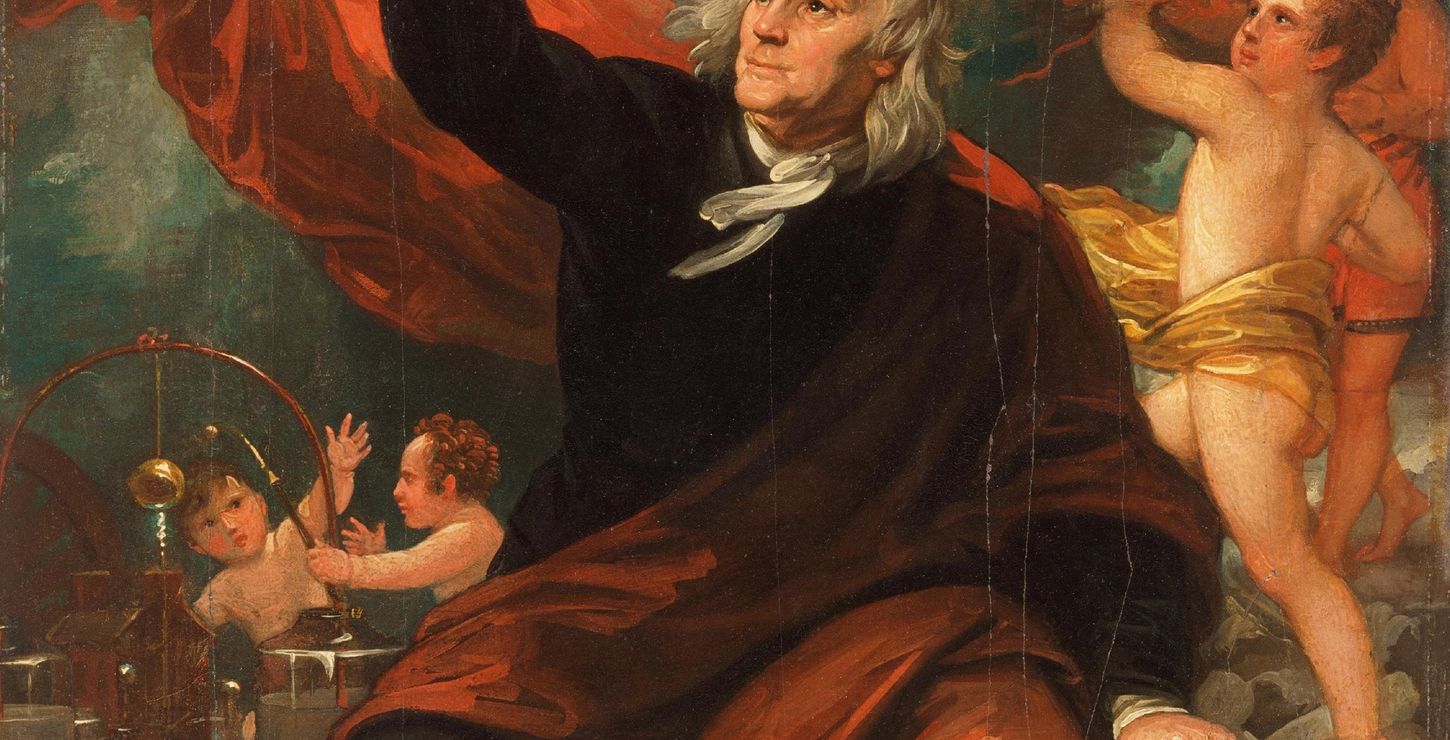Main Building
The works of art in this gallery -- drawn from the Museum's permanent holdings and lent by institutional and private owners -- are displayed in celebration of the Museum's recent acquisition of Jean-Antoine Houdon's marble bust of Benjamin Franklin, on view in the rotunda nearby (gallery 284). Thanks to the gifts from Mr. and Mrs. Wharton Sinkler and the collection of prints given in 1964 by Mrs. John D. Rockefeller, Jr., and other donors, the Philadelphia Museum of Art possesses a notable collection of portraits of Benjamin Franklin, now crowned by Houdon's vivid likeness. The images seen here are from the years 1777 to 1785, when Franklin served as minister from the American colonies to France. Much to Franklin's surprise, his presence in France provoked a vogue for his portrait. Already famous as a scientist, philosopher, and writer, Franklin was seen in Paris as the personification of the American republic, then at war with England for its independence. Franklin (born 1706, died 1790) was charming, witty, impressive, resourceful, and, by eighteenth-century standards, vigorous for a man in his seventies. His primary task as ambassador was to secure the support of France, which indeed became the most powerful and generous ally of the emerging United States. In June 1779, a rather amused Franklin wrote his daughter about the demand for his likeness. But a year later he commented that, "he had sat so often to painters and statuaries that he was perfectly sick of it." Nevertheless, Franklin realized the propaganda value of the publicity as benefiting the cause of the American colonies, and he often gave his portraits as presents. When Franklin arrived in Paris, there was already a sense that the age was rich in great figures, and the sophisticated capital was home to a host of artists who specialized in portraiture. The frequent exhibitions, or Salons, of the French Royal Academy displayed to an attentive public the paintings, sculptures, and prints of its members, who were the leading artists in the country. Works of art were also shown at other exhibitions and in shop windows. So topical were portraits of Franklin that a number of the prints exhibited here were announced and discussed in French newspapers. The comments on the object labels, drawn mainly from Charles Coleman Seller's book Benjamin Franklin in Portraiture (London, 1962), intend to give visitors a sense of the meaning these images had for Franklin, his family, friends, and admirers. For them, portraits functioned as bearers of information as well as serving as tokens of relationships. Among these people there was no unanimous agreement about the relative merits of Franklin's portraits, and we expect that this will be true as well for viewers today. What is undeniable is that his face and portly figure became famous in his day to thousands of people who had never met him, and that these images have shaped the way we think of him two hundred years later.
